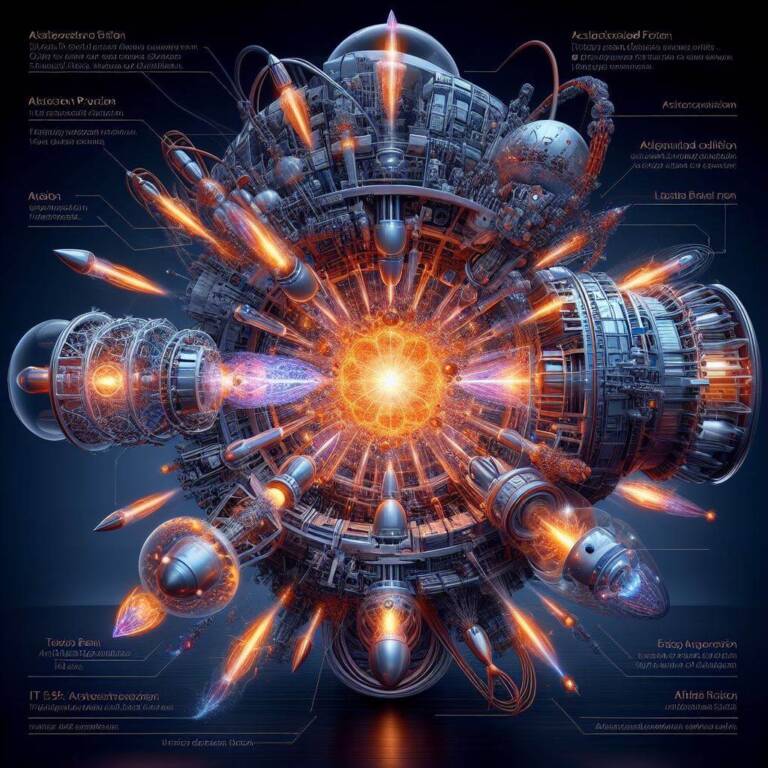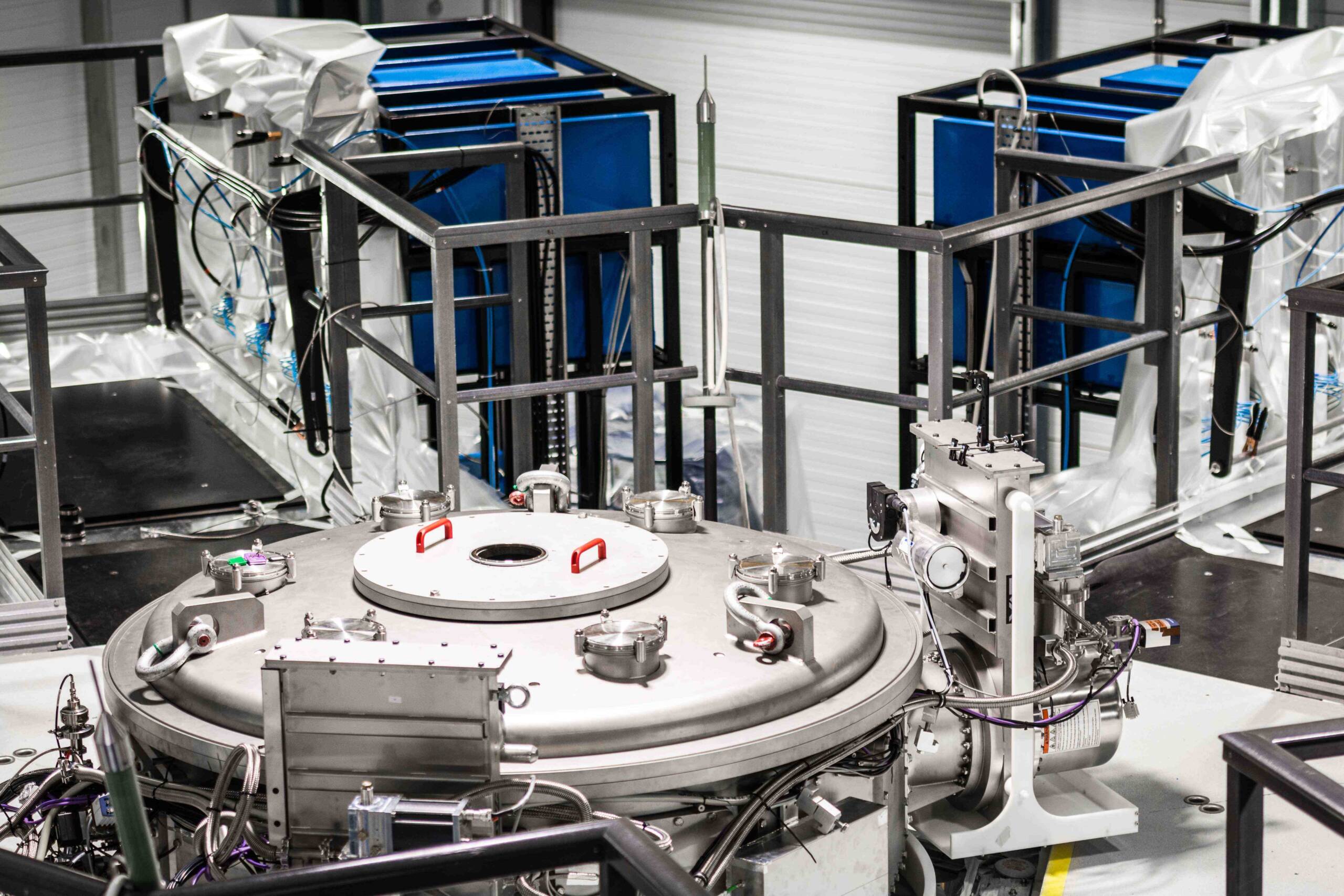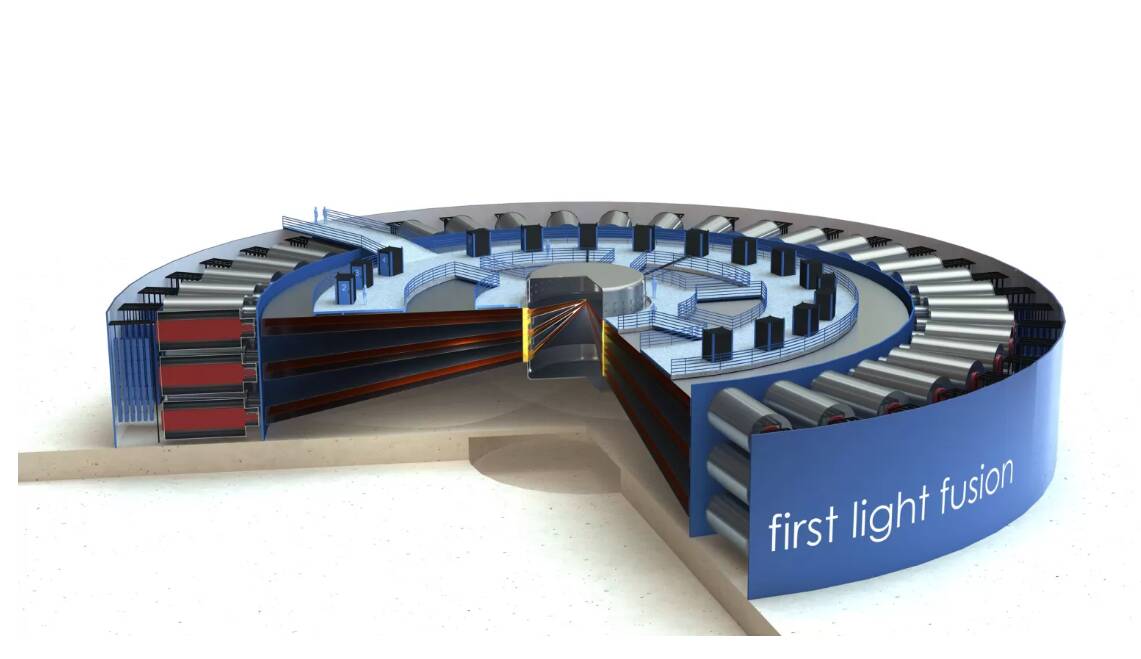Inertial nuclear fusion reaches a new milestone

First Light Fusion, the world's leading inertial fusion company, has managed to increase the 'stall' distance – the distance the projectile travels to the fusion target – by more than 10 times. This is a significant milestone that could solve one of the crucial engineering challenges in designing a projectile fusion power plant.
Nuclear fusion by firing projectiles
First Light is developing a new method for confinement fusion that uses kinetic energy to achieve nuclear fusion. Rather than simply creating the plasma, containing it and heating it, First Light “Fires” projectiles at very high velocity at a small projectile containing the hydrogen that needs to be fused. The succession of these projectiles provides the energy to achieve the reaction through kinetic energy.
The challenge is to precisely launch the projectile at speeds of several kilometers per second, ensuring that it remains in a solid state when it hits the fusion fuel. First Light is working on this problem, as its pilot power plant design requires a high degree of speed and precision. They conducted research into this with their Machine 3, which uses pulsed energy to launch projectiles electromagnetically and accelerates them up to 20 km per second, 72 000 km/h.
So far, the highest standoff distance achieved has been 10mm, sufficient to test amplifier technology via kinetic energy, but far from the ideal length of the potential gun barrel to achieve fusion, which should be several meters to be commercially usable.
As part of its experimental program, First Light managed to increase standoff distance from 10mm to 10cm this month, a significant 10-fold increase. The electric cannon design used in the experiment appears to have worked well and they were able to explore high-velocity firing on a pulsed high-energy machine that operates without melting the projectiles and maintaining their structural integrity, which is a crucial requirement for obtain a stall distance.
The projectile was kept in a solid state for over 10 cm by adapting the electric gun foil and projectile thicknesses to the M3 current pulse. Material strength simulations were used to determine the desired thicknesses, which allowed the projectile design to maintain its strength over a flight distance of 10 cm.
The projectile was not only able to reach the primary target, but also set a new record as the highest energy electromagnetic cannon ever tested.
To operate a continuous pulsed process, an inertial fusion power plant will require an amplification approach, similar to an internal combustion engine. In this approach, the fuel will be contained in the target amplifier and the fusion driver, which is a projectile fired at velocity, will act as the spark plug. The target will be dropped into the reaction chamber and the projectile will be fired at the target to trigger the fusion.
Goals and next steps
First Light's goal is to design a low-risk, simple, large-scale facility. By increasing the energy per shot and reducing the frequency, First Light aims to develop a smaller rig with much lower risk. Because, according to its creators, inertial fusion is much safer than what we try to achieve with the compression of plasma at very high temperatures in tokamaks.
First Light is working to address the remaining engineering challenges in designing a power plant, one of which is clearance distance. The company's advanced simulation capability allows it to test thousands of options at this rate.
“This is a milestone moment for First Light and is the result of a tremendous amount of effort, time and perseverance from the entire team,” said Mila Fitzgerald, First Light Fusion scientist. “As we scale our approach and look to design a pilot power plant based on the First Light projectile approach, one of the key challenges is the ability to fire a projectile at high speed and from a greater distance. This is the basis of our current pilot plant project. This experiment demonstrates one way to do that and is an exciting step in the right direction."
“As we move into the era of commercialization of fusion energy, solving key engineering challenges in a power plant is a key focus for the First Light team,” commented Dr. Nick Hawker, Founder and CEO of First Light Fusion. “We know that the physics of inertial fusion works. Our recent success at Sandia proves that our amplifiers work. To achieve commercial, affordable and scalable fusion energy as part of our future energy mix, we need to solve the fundamentals of the power plant in a way that works with the physics.”
The Team is now working on "Machine 4" , an accelerator machine with a radius of 75 meters which should be the technological demonstrator of the possibility of energy gain obtainable from inertial nuclear fusion by launching projectiles at 60 km per second, 216,000 km per hour .

Thanks to our Telegram channel you can stay updated on the publication of new Economic Scenarios articles.
The article Inertial nuclear fusion reaches a new milestone comes from Economic Scenarios .
This is a machine translation of a post published on Scenari Economici at the URL https://scenarieconomici.it/la-fusione-nucleare-inerziale-raggiunge-un-nuovo-traguardo/ on Fri, 05 Apr 2024 07:00:38 +0000.


